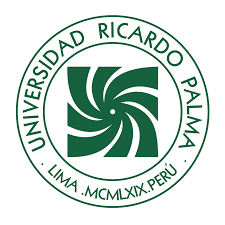First steps using FPGA technology
DOI:
https://doi.org/10.31381/perfilesingenieria.v20i21.6320Palabras clave:
FPGA, VHDL, software, logic, technologyResumen
Este es un proyecto básico, a futuro vienen proyectos donde se trabaje con lógica secuencial y con otras herramientas como el software ISPLever de la empresa de Semiconductores LATTICE, que permite, usando solamente software, desarrollar proyectos de FPGA. Es decir, esta investigación sirve como base para proyectos de mayor envergadura
Background: This research has as main objective to show in a general way the FPGA technology, Field Programmable Gate Array – Arrangement of programmable Gates on the Chip. We will talk here about its architecture, manufacturing companies, description of a simple circuit using VHDL, Very High Speed Hardware Description Language, Quartus II Software and the INTEL Cyclone II card. Method: A simple combinational logic circuit was used to carry out the simulation with the Quartus II software. Leaving everything clearly indicated to carry out larger projects. Results: The results of the study show that the graphs obtained as a response of the circuit studied were as expected, and also that the properties of the software under study could be verified. Conclusions: The general characteristics of the FPGA technology were studied. The basic functions of the Quartus II software were known to execute a project in all its phases.
This is a basic project. In the future there are projects that work with sequential logic and with other tools such as the ISPLever software from the LATTICE Semiconductor company, which allows, using only software, to develop FPGA projects. In other words, this research serves as the basis for larger-scale projects.
Descargas
Citas
P. Kumar, «Development of Programmable Logic Devices,» International Journal of Innovative Research in Computerand Communication Engineering, vol. 8, nº 4, 2020.
P. Kumar, «Analysis of ASIC Design Methodology in Advanced Digital System,» International Journal of Innovative Research in Computer and Communication Engineering, vol. 8, nº 4, 2020.
E. Saeed, Basics VHDL Labs. Basics Lab for Learning VHDL. Learning with Experiments, Al Nahrain. Irak: Lap Lambert, 2020.
A. Ivanova, «A Concept of Visual Programming Tool for Learning VHDL,» IOP Conference Series: Materials Science and Engineering, 2020.
INTEL-ALTERA, «Quartus II Handbook Version 13.1. Volume 1: Design and Synthesis,» November 2013. [En línea]. Available: https://www.intel.com/content/www/us/en/software-kit/666221/intel-quartus-ii-web-edition-design-software-version-13-1-for-windows.html.
S. Rai, P. Nath, A. Rupani, S. Vishvakarma y A. Kumar, «A Survey of FPGA Logic Cell Designs in the Light of Emerging Technologies,» IEEE Access, vol. 9, pp. 91564 - 91574, 2021.
INTEL, «Cyclone II Device Handbook, Volume 1,» 2008. [En línea]. Available: https://www.intel.com/content/dam/www/programmable/us/en/pdfs/literature/hb/cyc2/cyc2_cii5v1.pdf.
C. Figueroa y S. Giraldo, Diseño y construcción de un instrumento prototipo para el análisis de la ley de Hooke, caida libre y pendulo simple usando dispositivos FPGAs, Pereira. Colombia, Universidad Tecnológica de Pereira. (Tesis de Maestría), 2019.
INTEL, «Descargar software QUARTUS II,» 2021. [En línea]. Available: https://www.intel.com/content/www/us/en/software-kit/666221/intel-quartus-ii-web-edition-design-software-version-13-1-for-windows.html.
C. Fajardo, «Introducción a VHDL. Circuitos Secuenciales: Registros y Contadores. Universidad Industrial de Santander,» 2013. [En línea]. Available: https://www.youtube.com/watch?v=vTmBuR-JgvM.
B. ROBLES, Principios del FPGA y aplicaciones en el control de procesos industriales., Universidad de El Salvador. San Salvador. El Salvador: (Tesis de Pregrado), 2016.
F. Urbano, «Simulación usando Altera Quartus II 13 sp1 Web Edition,» 2013. [En línea]. Available: https://www.youtube.com/watch?v=C7f5mO6Tjk0.
C. Benalcazar y I. Andrade, Diseño e implementación de prácticas con FPGA para la materia de Digitales II mediante la herramienta de trabajo Cyclone II de Altera, Guayaquil. Ecuador, (Tesis de Pregrado), 2012.
INTEL, «Intel FPGA USB Download Cable User Guide,» 2016. [En línea]. Available: https://www.intel.com/content/dam/www/programmable/us/en/pdfs/literature/ug/ug_usb_blstr.pdf.
C. Maxfield, The design warrior´s guide to FPGA, Road Burlington, Massachusets, USA: ELSEVIER, 2004.
S. Naing, N. San y T. Chao, «FPGA Based Digital Logic Circuits Operation for Beginners,» International Journal of Trend in Scientific Research and Development (IJTSRD), vol. 3, nº 5, pp. 495-501, 2019.
H. Cao y U. Meyer, «XML-Based Automatic NIOS II Multi-Processor System Generation for Intel FPGAs,» Electronics, 2022.
F. Santos, Emulación basada en FPGA de los efectos de los single event upsets ocasionados por la radiación en circuitos digitales tolerantes a fallos, Madrid. España, Universidad Complutense de Madrid. (Tesis Doctoral), 2018.
M. Mustaph y N. Zulkarnain, «Full cycle trigonometric function on Intel Quartus II Verilog,» International Conference on Engineering and Technology (IntCET 2017), 2018.
U. Cem y T. Bora, Digital System Design with FPGA: Implementation Using Verilog and VHDL, Estambul. Turquia: McGraw Hill, 2017.
Publicado
Cómo citar
Número
Sección
Licencia
Derechos de autor 2024 Pedro Selencio Landaeta

Esta obra está bajo una licencia internacional Creative Commons Atribución 4.0.
En caso de que el manuscrito sea aprobado para su próxima publicación, los autores conservan los derechos de autor y ceden a la revista el derecho de la publicación, edición, reproducción, distribución, exhibición y comunicación en el país de origen, así como en el extranjero, mediante medios impresos y electrónicos en diferentes bases de datos. Por lo tanto, se establece que después de la publicación de los artículos, los autores pueden realizar otro tipo de acuerdos independientes o adicionales para la difusión no exclusiva de la versión del artículo publicado en la presente revista (publicación en libros o repositorios institucionales), siempre que se indique explícitamente que el trabajo se ha sido publicado por primera vez en esta revista.
Para que quede constancia de este procedimiento, el autor debe llenar los siguientes formatos:

1.png)








